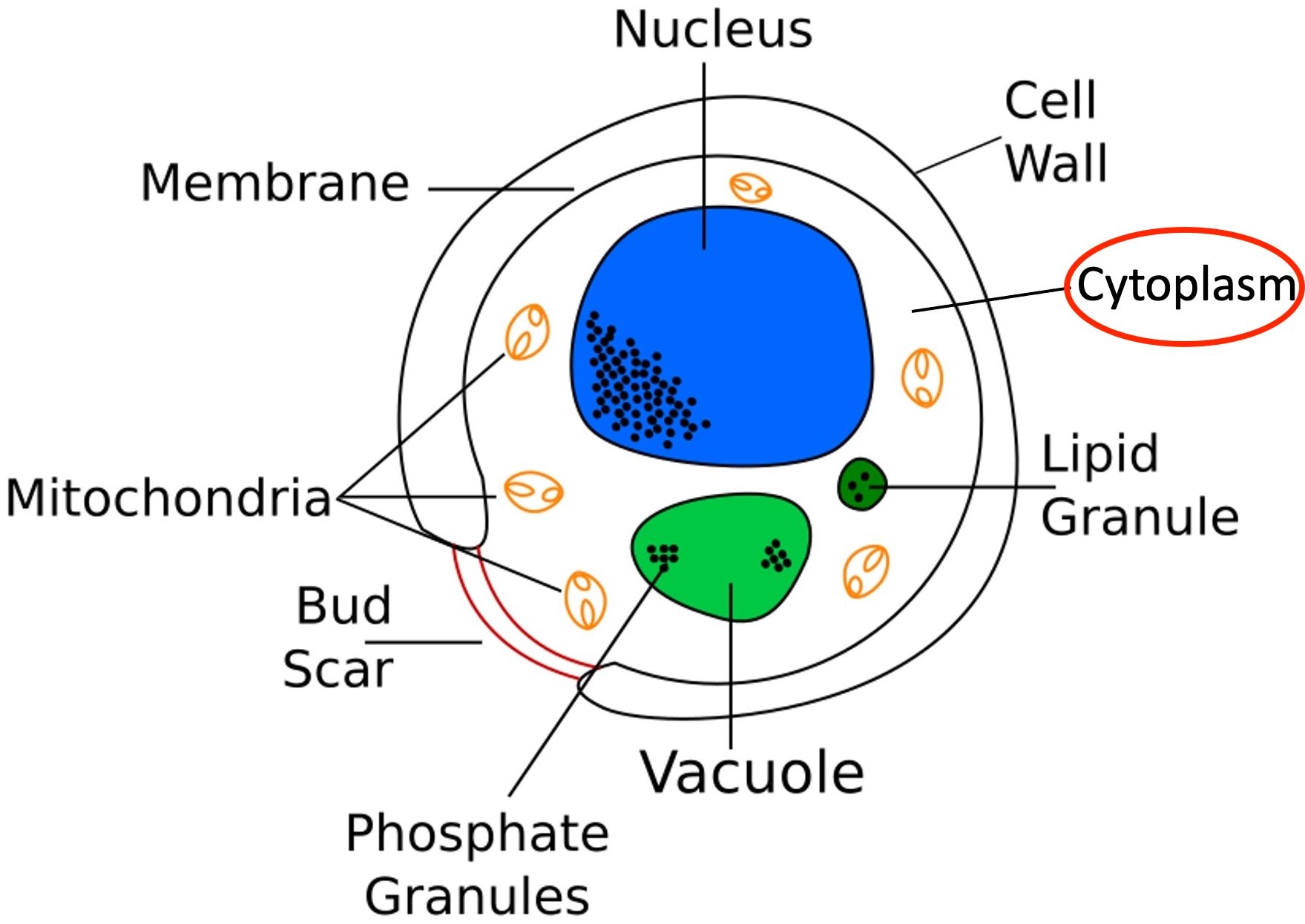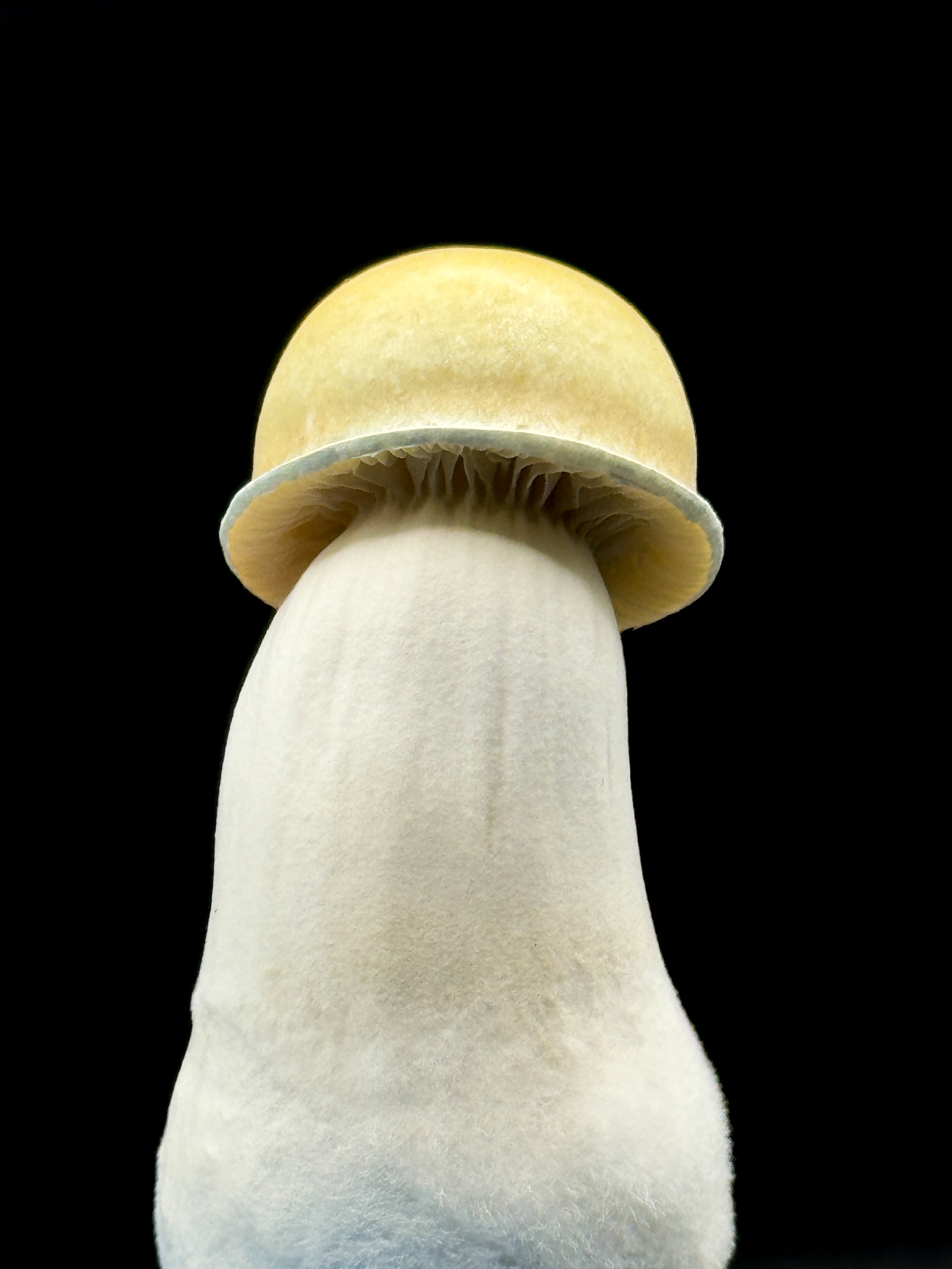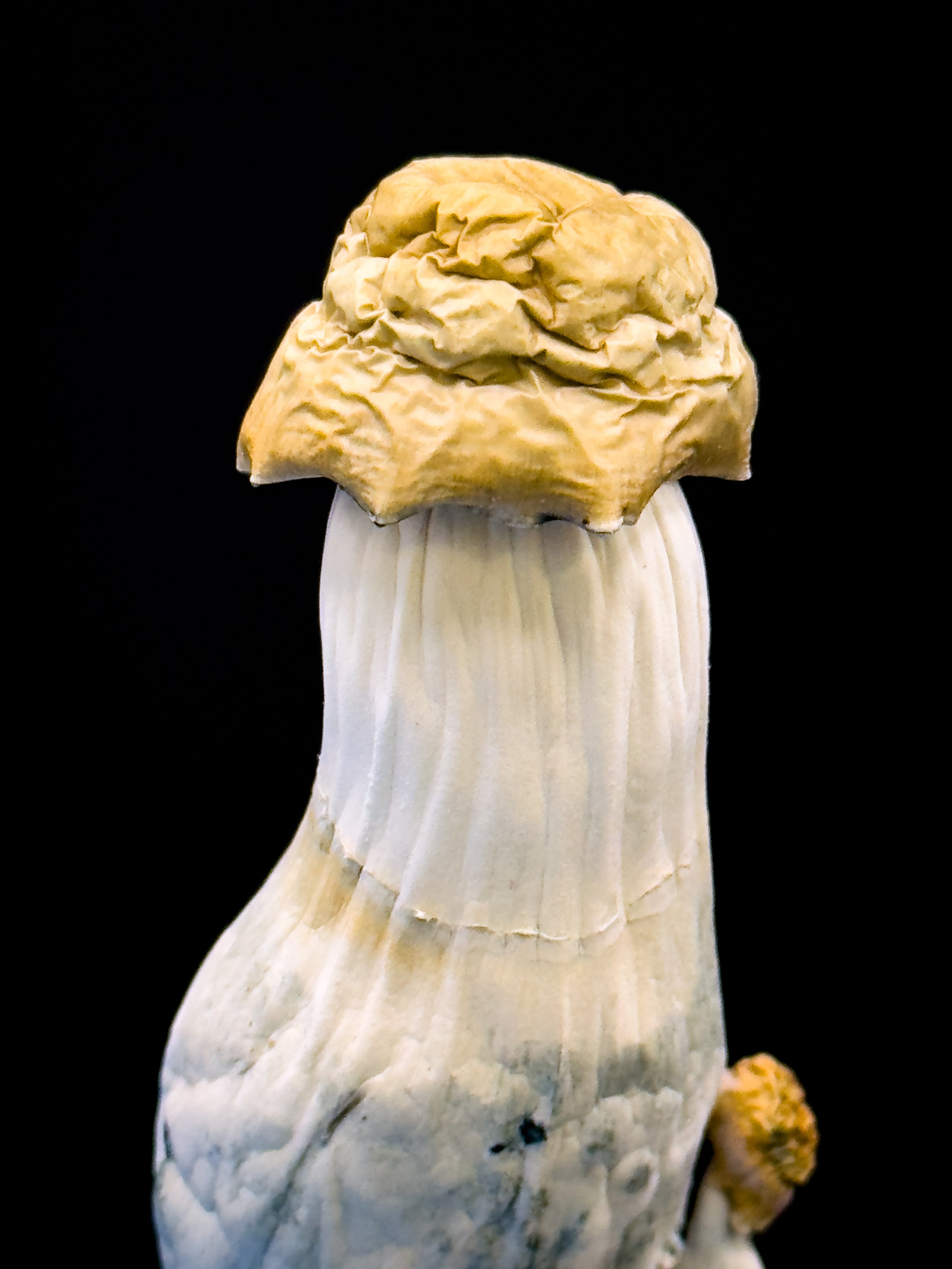Where’s the psilocybin and how do I get it into my body?
Where’s the good stuff?
As discussed in previous blog posts, psilocybin (converted to psilocin) is the chemical compound most notably responsible for the psychedelic experience. Psilocybin resides in psilocybin-containing mushrooms like P. cubensis, but where is it?
In short, right here:
Psilocybin is present in the cytoplasm (circled) of the fungal cell.
What is a mushroom?
Before we get too deep into the where, we need to understand what a mushroom actually is. When you picture a mushroom, you’re picturing the fruiting body of a mycelial network. This is the end phase of the full mycelial growth cycle.
The fungus itself starts as spores, the reproductive genetic material produced by the mushroom fruit (much like the seeds of a plant).
The spores are dikaryotic, meaning that there are two different kinds, much like a sperm and an egg. The below picture illustrates the two different types (note the spores that have one circle and the spore that has two circles):
Mushroom spores.
The spores grow.
Once given nutrients, each spore begins to grow hyphae, which are thread-like cellular structures. These initial hyphae contain only one half of the genetic material needed for the reproductive cycle. This initial growth is typically very small since spores are usually densely clustered. Mushroom fruiting bodies can release about 1 billion (1,000,000,000) spores per day!
Once the hyphal growth of the two different kinds of spores touch, they immediately mix genetic material, allowing for the reproductive cycle to begin (see image below). Hyphae growing together like this is commonly referred to as mycelium.
Mushroom mycelial growth.
The mycelium matures.
As the mycelium grows and matures, it feeds off surrounding nutrients, much like the roots of a plant. It will eventually become dense enough to begin the next step in the reproductive process. The hyphal threads begin to form more dense areas of growth, known as hyphal knots. These hyphal knots will work more efficiently to break down the substrate on which they are growing, concentrating nutrients.
Hyphal knots will continue to grow more densely as time passes and more nutrients are extracted from the surrounding growing media. These hyphal knots begin to form primordia, the next phase of the reproductive cycle. Primordia are even more densely concentrated mycelium. Based on surrounding conditions, some primordia will begin to form pins, or the initial phases of fruiting bodies.
See the image below for an example of each of these three phases:
Varying stages of mycelial growth.
Fruiting bodies form.
Not all pins will form viable fruiting bodies. Many of these will cease growing to allow for the viable pins to use all available nutrients. Those that do grow into fruiting bodies, however, are essentially just even more dense concentrations of mycelium, made up of hyphal growth formed into superstructures.
There is some diversification in cells as some form the caps, gills, and spores needed to complete the reproductive cycle, but the cellular structure remains largely the same.
Fruiting body of a mushroom grown at Horizon Edibles.
Where’s the psilocybin?
The short answer: all over. Psilocybin is located within the cells of the mycelium. Fruiting bodies contain the most densely formed mycelial growth, so they will have the most psilocybin, but psilocybin is found throughout the mycelial growth. Many people believe the caps of mushrooms are more potent than the stems, but that’s not universally true. Ultimately, there’s psilocybin everywhere in the mycelium, and the concentration largely correlates to the density of the mycelium cells.
How do I get the psilocybin?
Because the psilocybin is located inside the cells of the mycelium, you have to get it out somehow. There are multiple methods for doing so.
Digestion: You can let your stomach acid break down the cell walls to access the psilocybin. This happens when you simply eat the mushroom (see previous blog posts regarding this topic).
Pulverization: You can physically break the cell walls apart through grinding to make the psilocybin more accessible. This is why grinding mushrooms helps make the psilocybin more accessible. This is a double edged sword, however, since it also makes the psilocybin more susceptible to breaking down and losing potency.
Psilocybin is soluble in a number of liquids (water- and alcohol-based liquids, mostly). This means that psilocybin dissolves and remains suspended in the liquid. As liquid moves in and out of the cell walls, it will carry the psilocybin with it. Many people achieve this through teas, though it can also be performed much more precisely on a commercial scale, optimizing types of liquid, soak time, forcible removal of the liquid from the cells, then concentration of the extract.
No matter what you do, you have to get the psilocybin from inside the cells outside of the cells for your body to then use it. Our products help you do that as efficiently as possible. In the next post, you can learn about how we do that through extraction.








